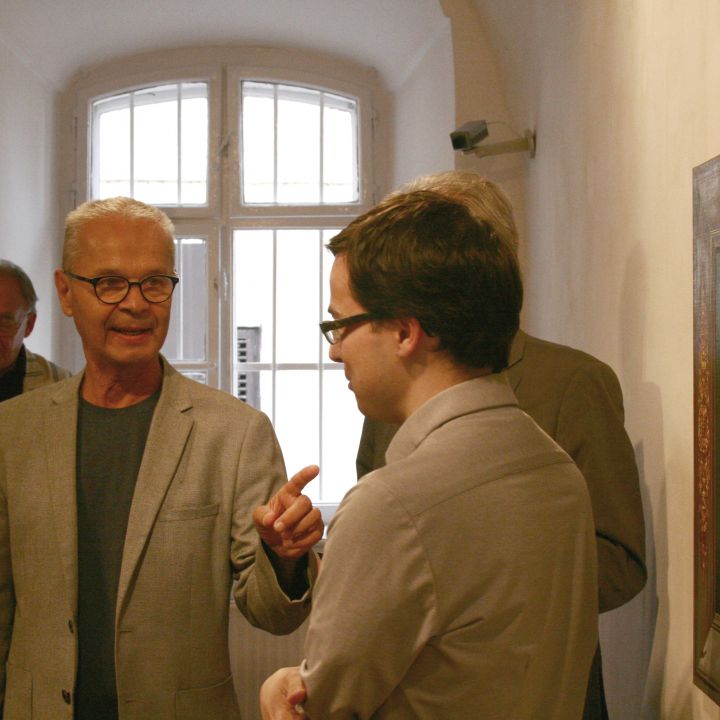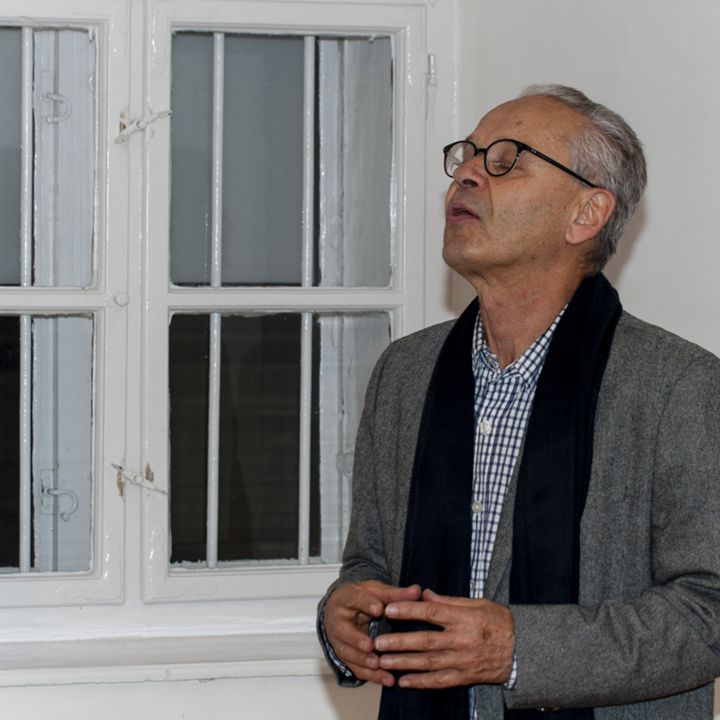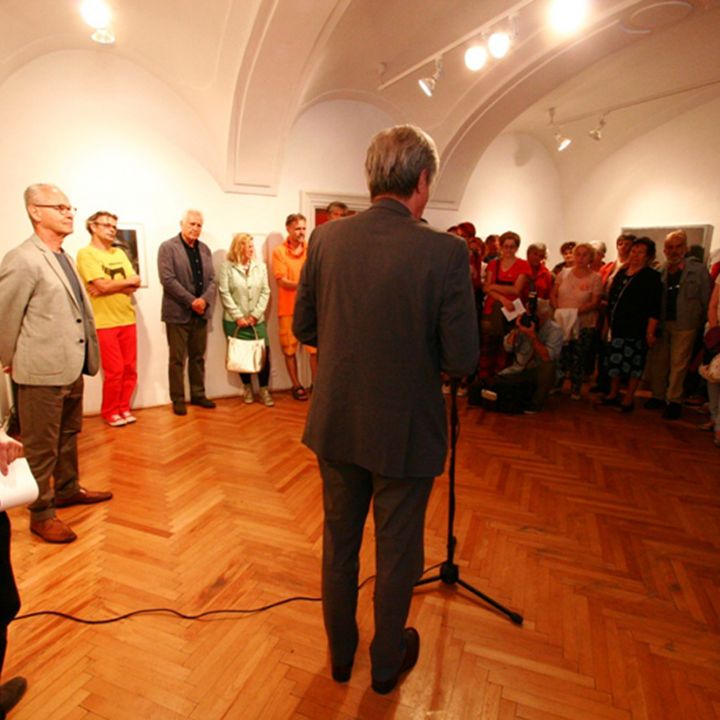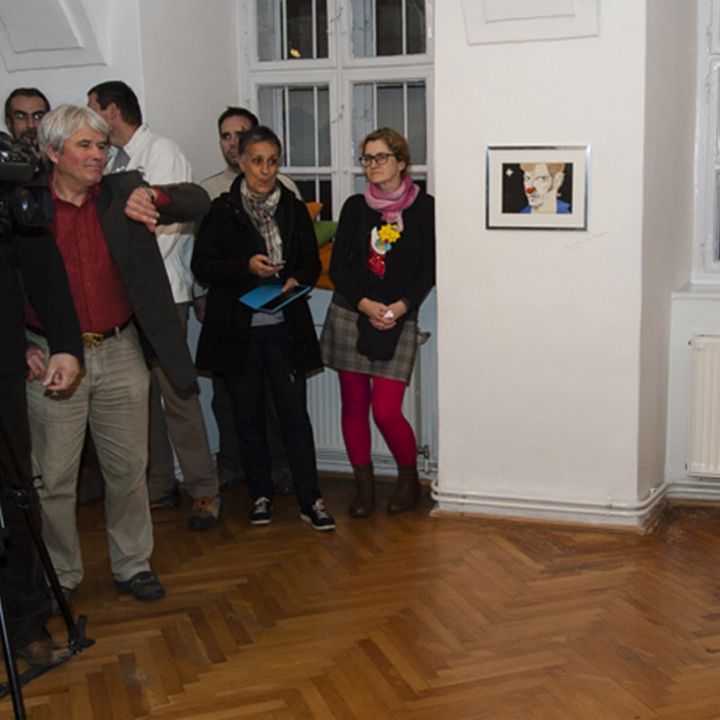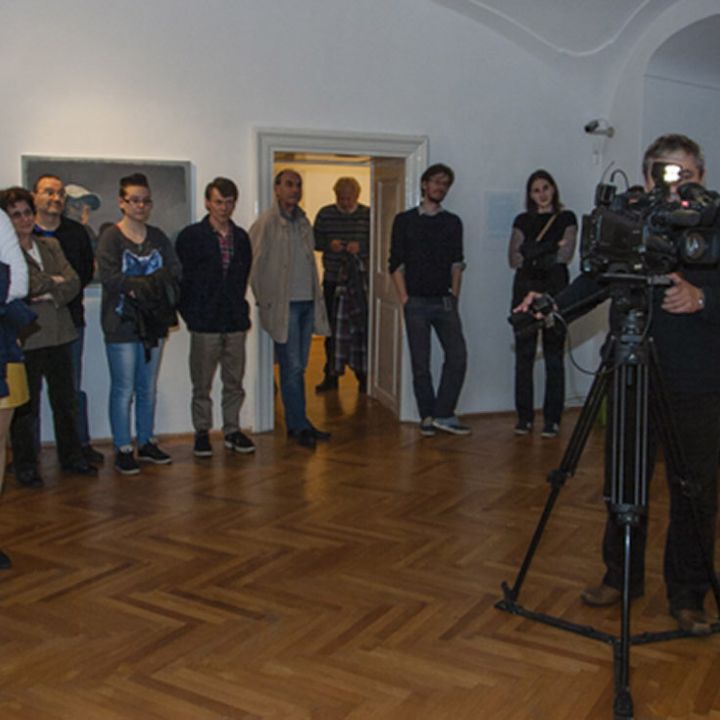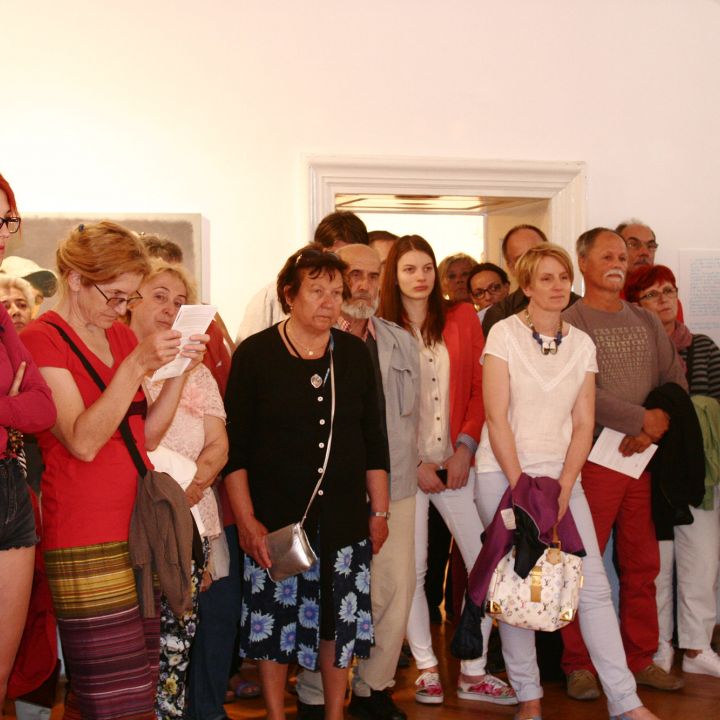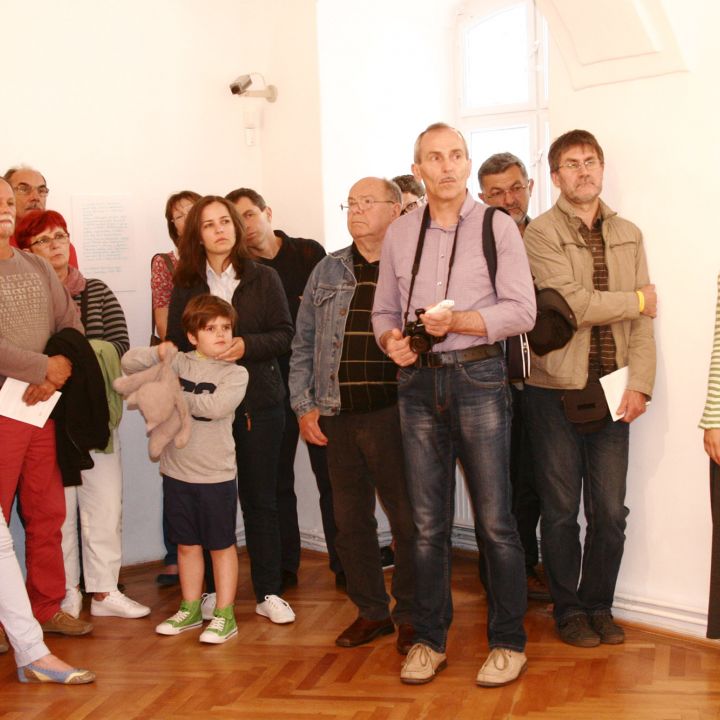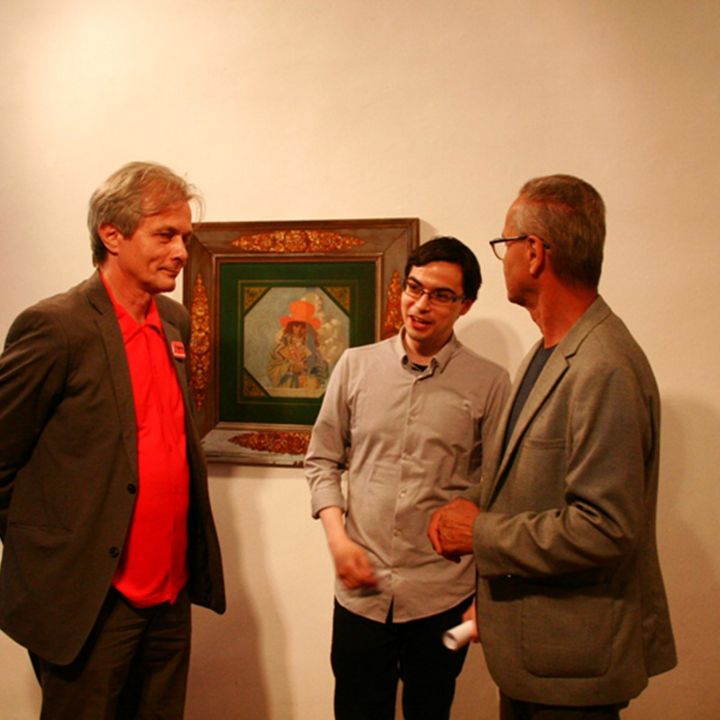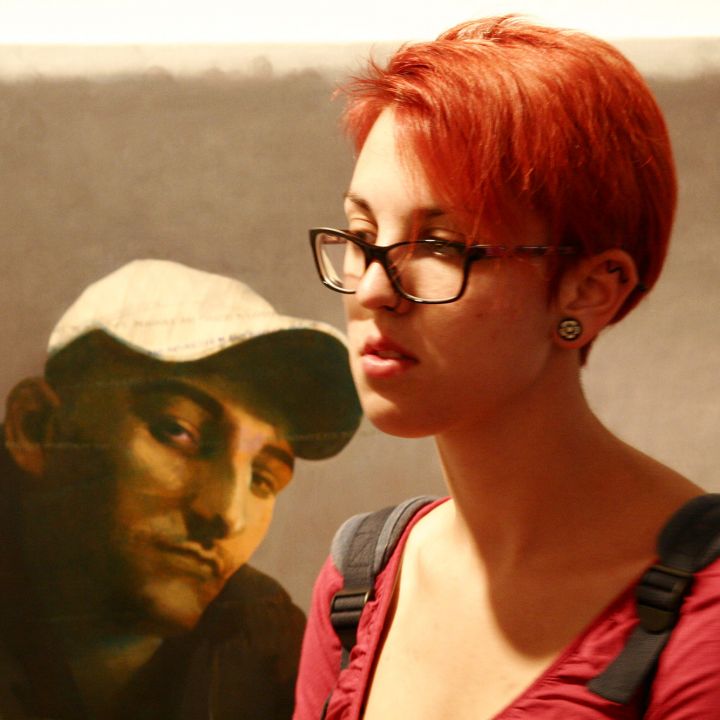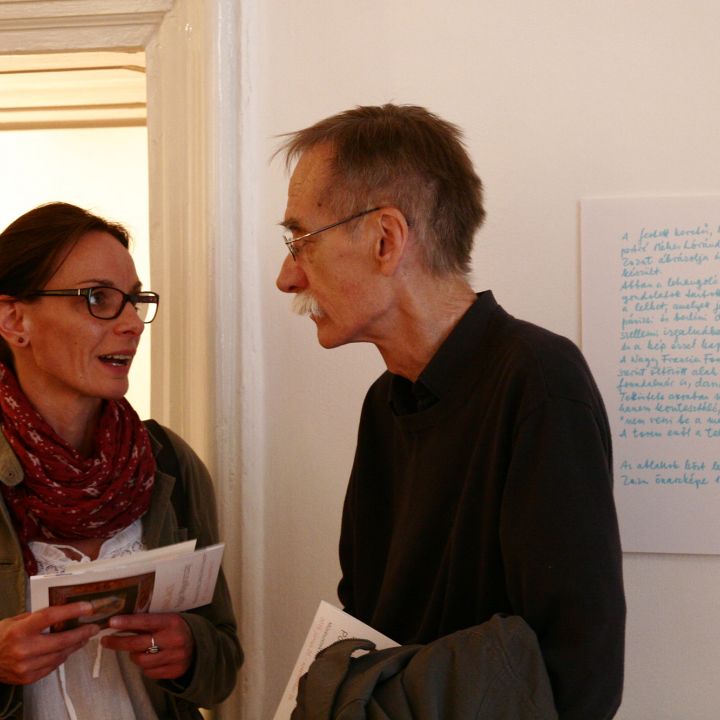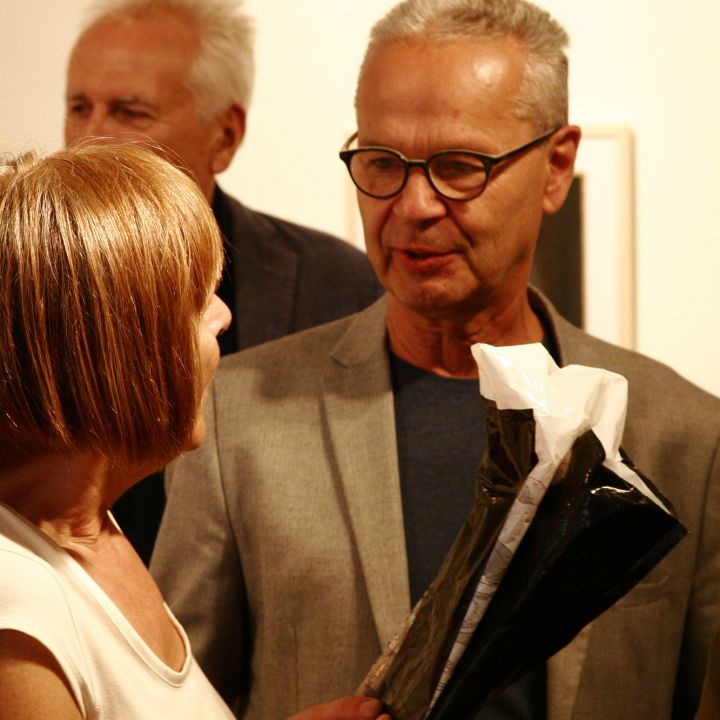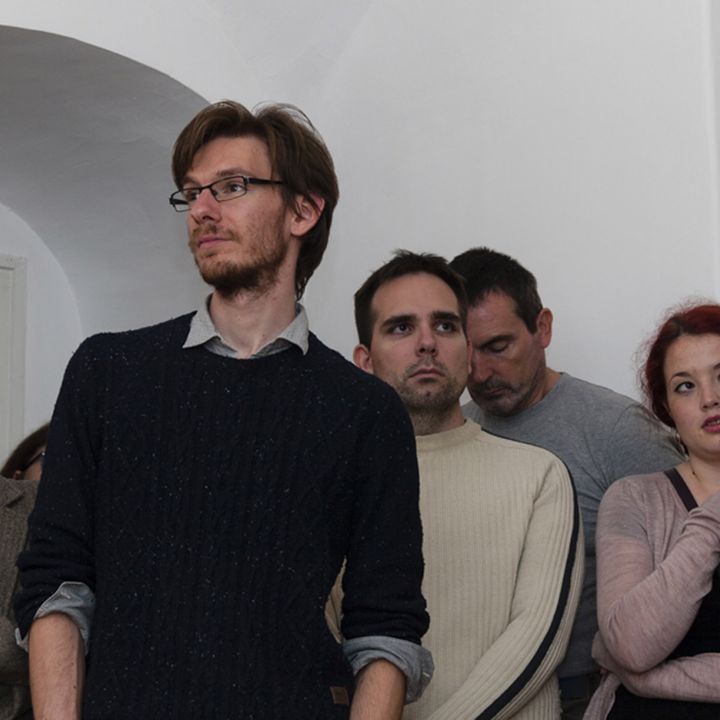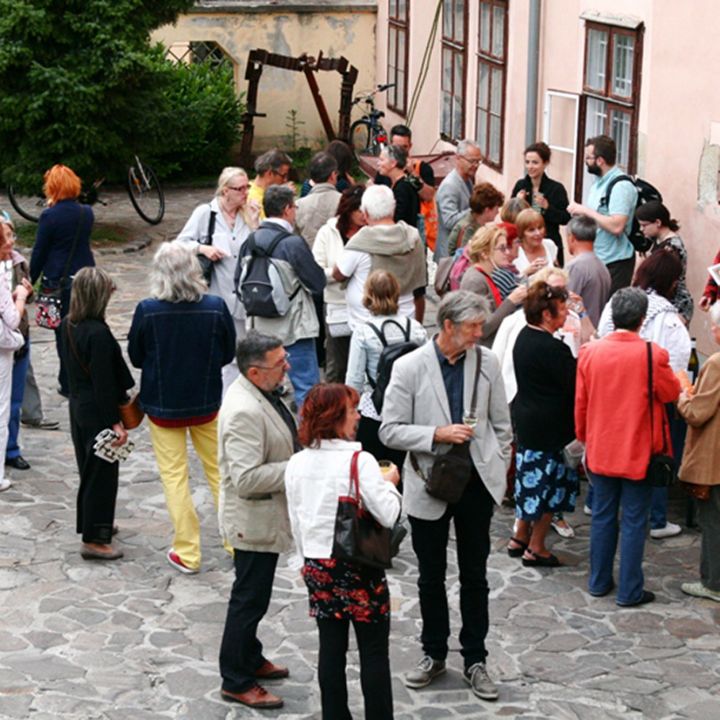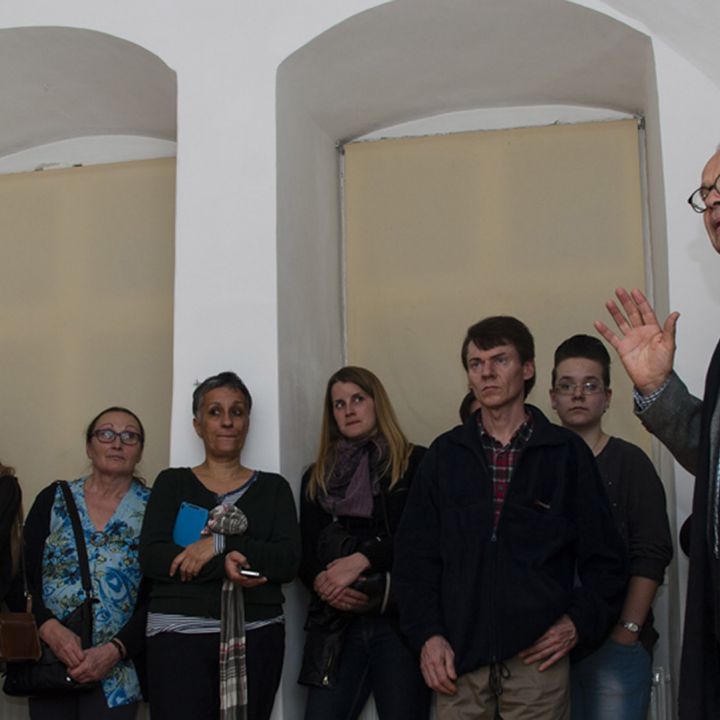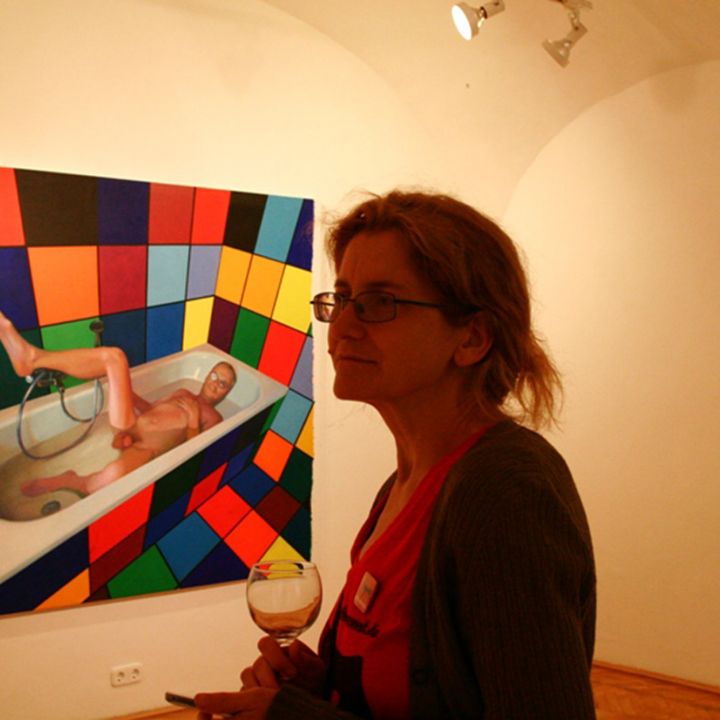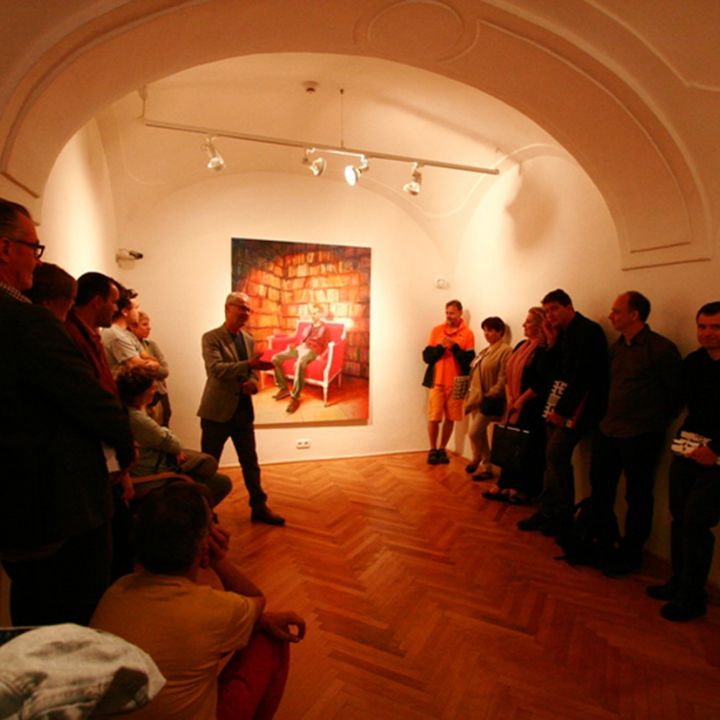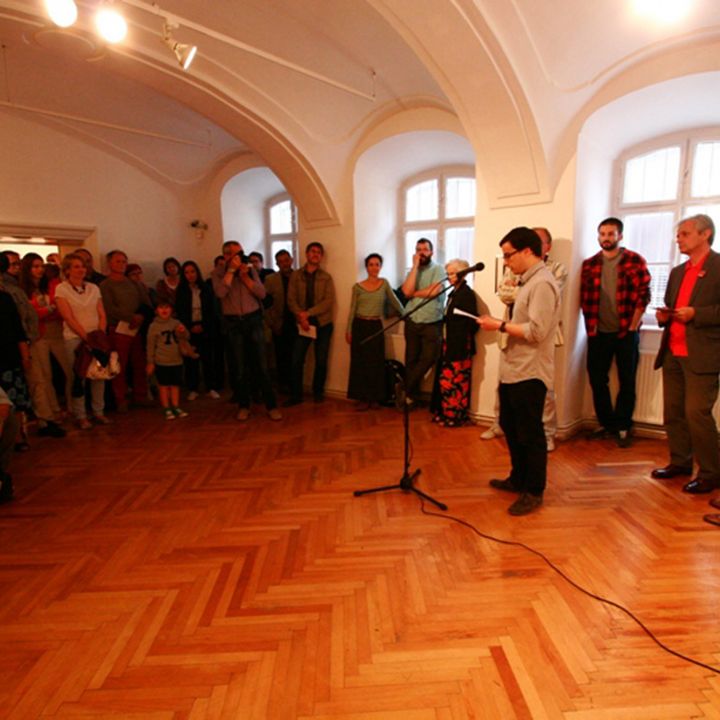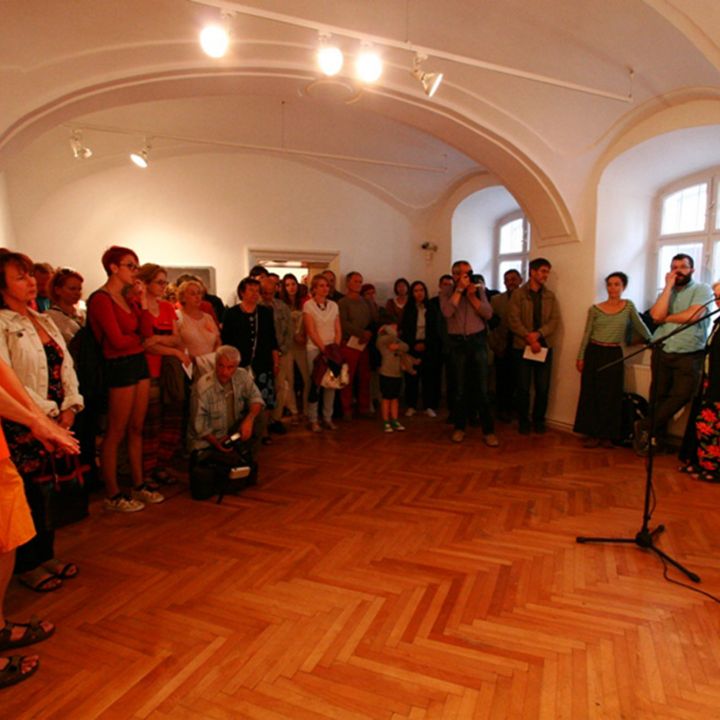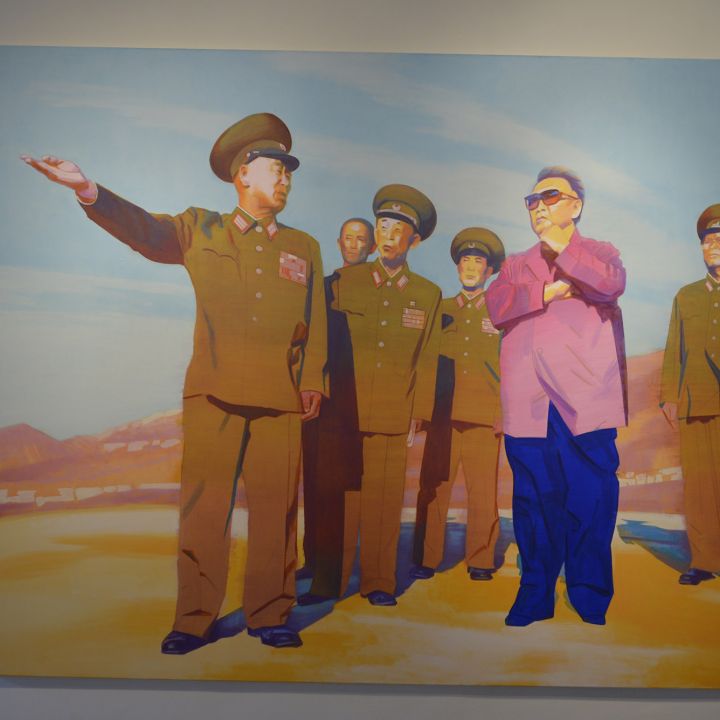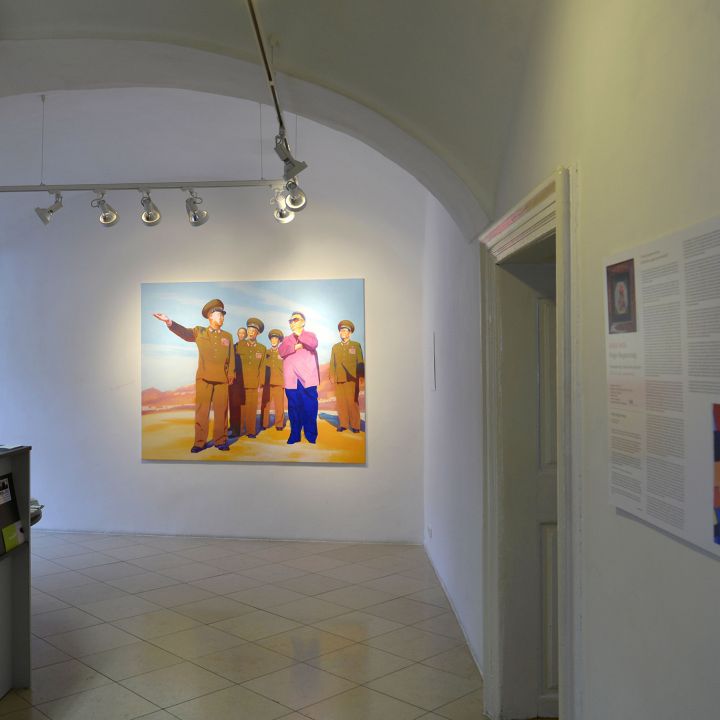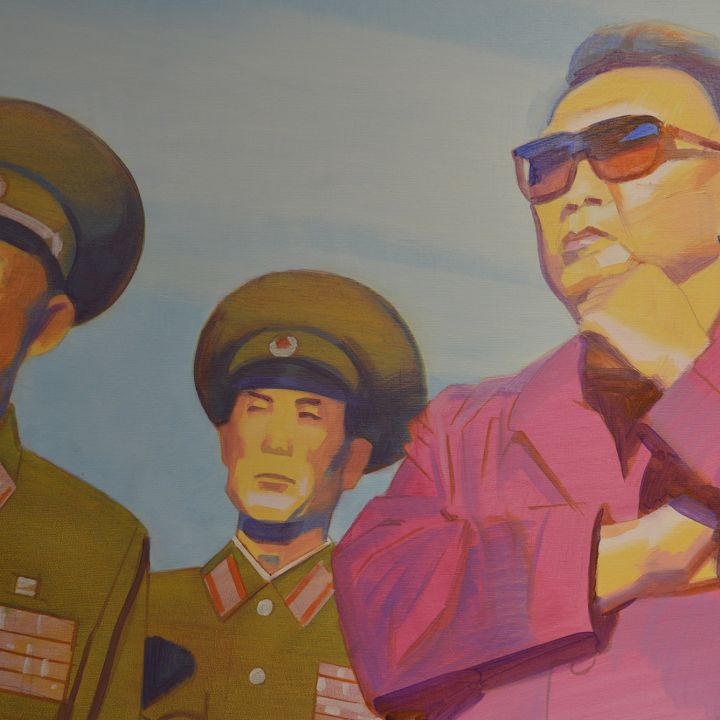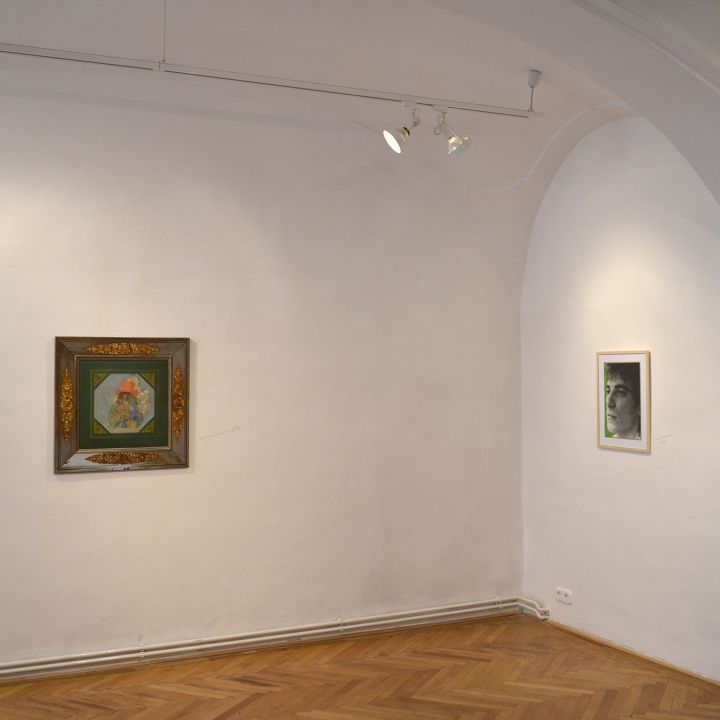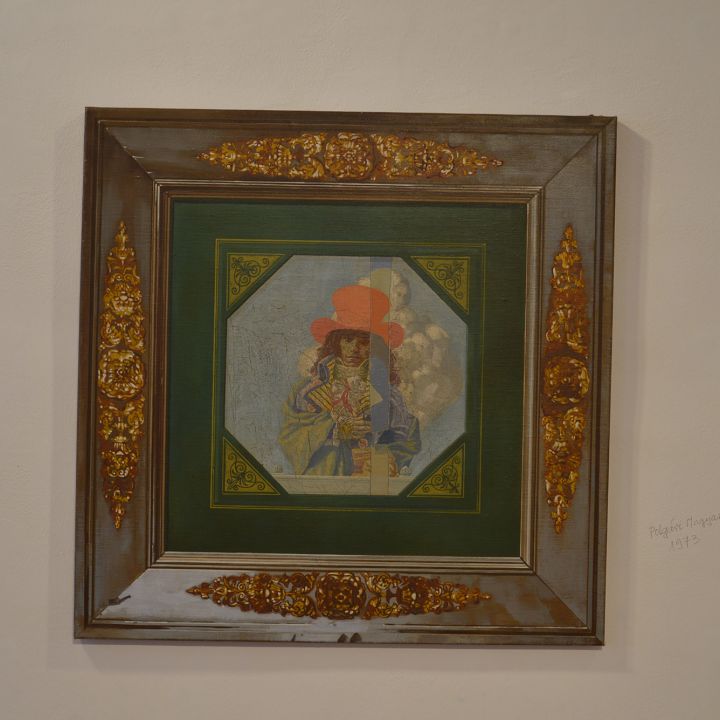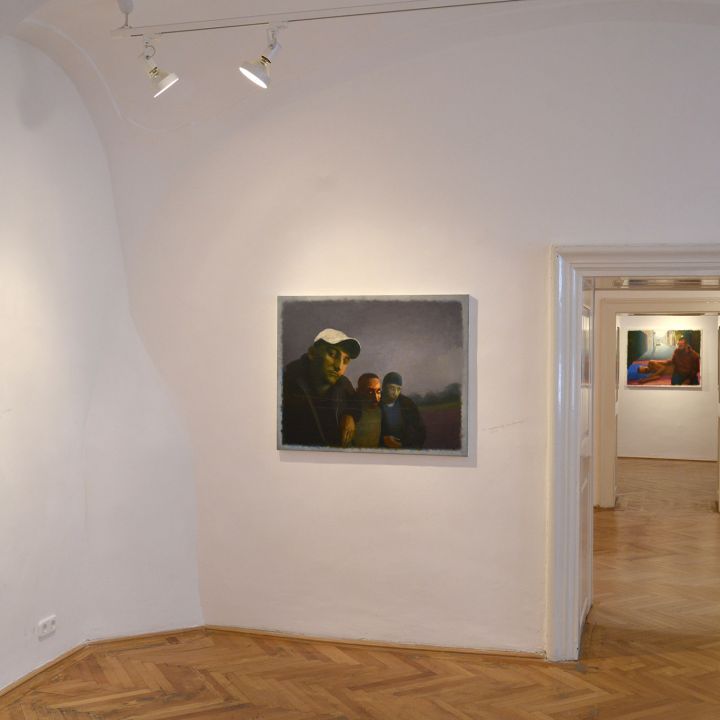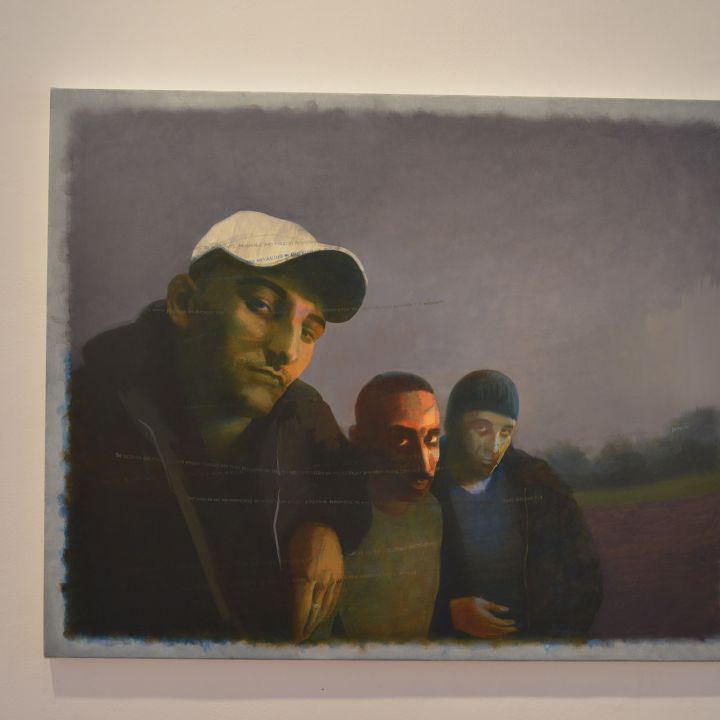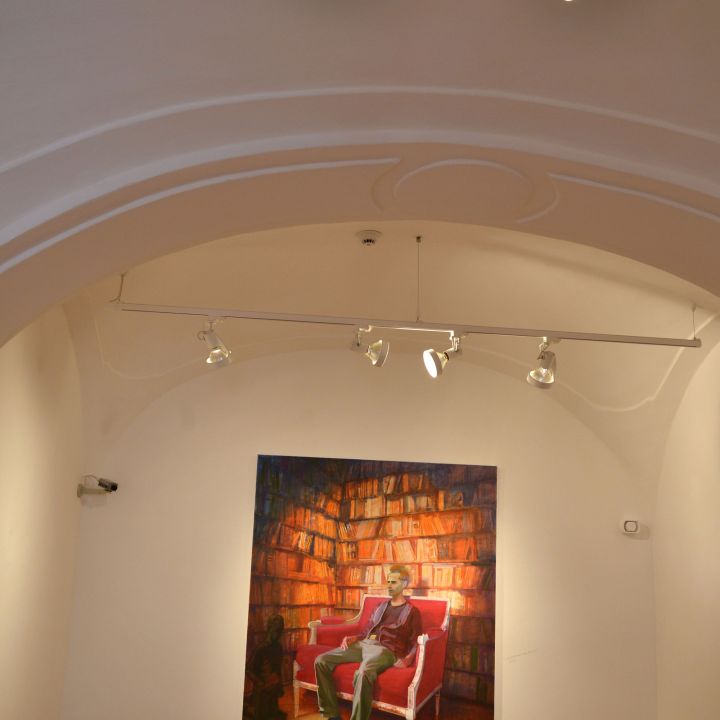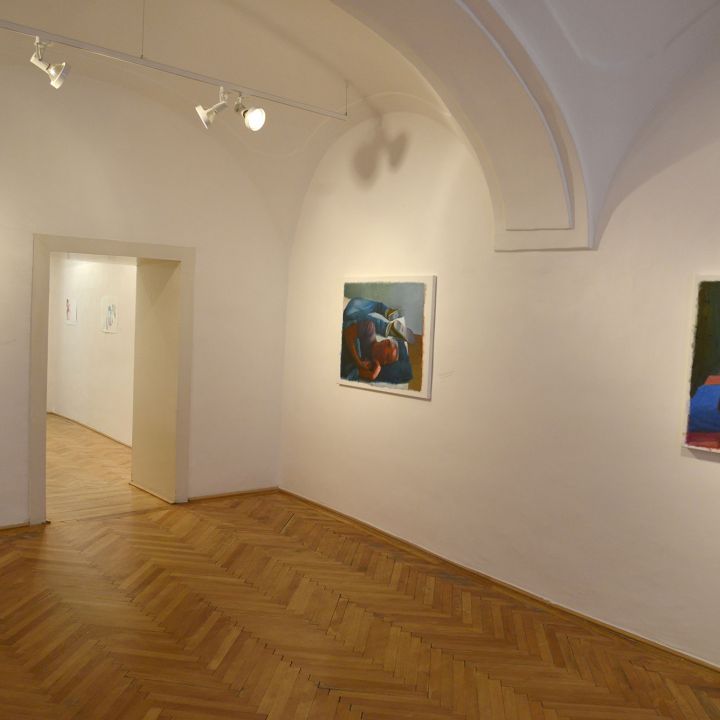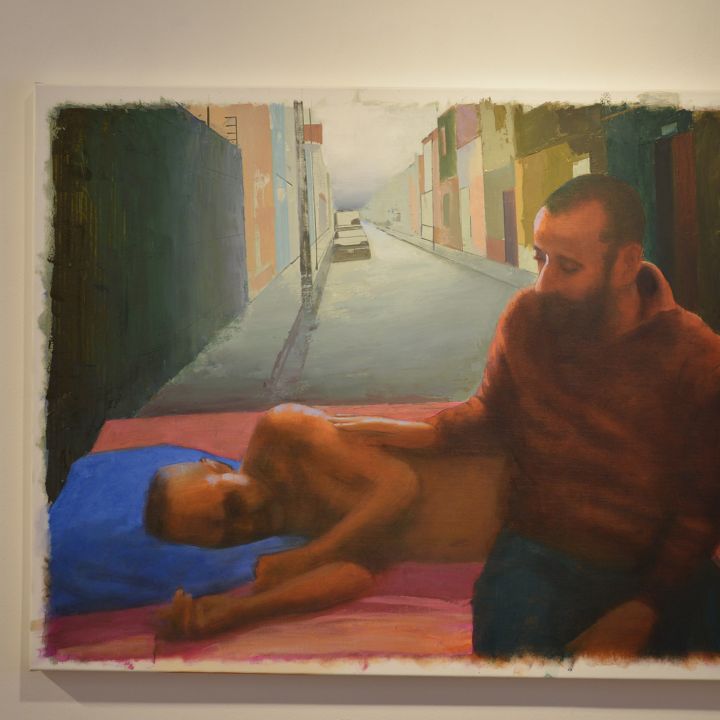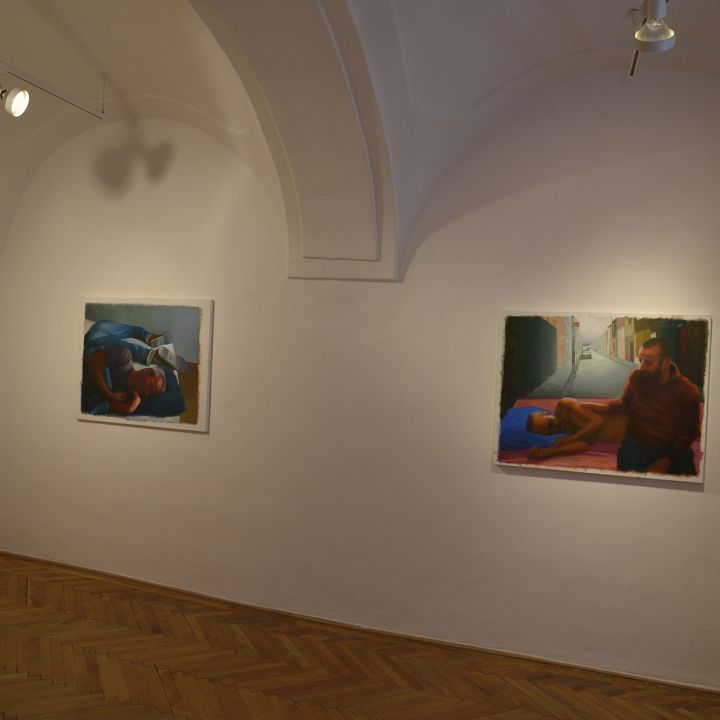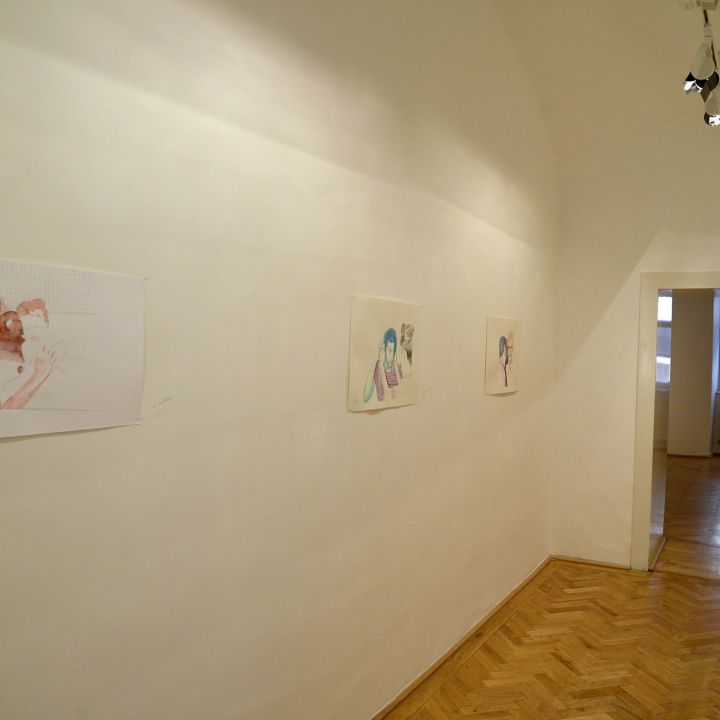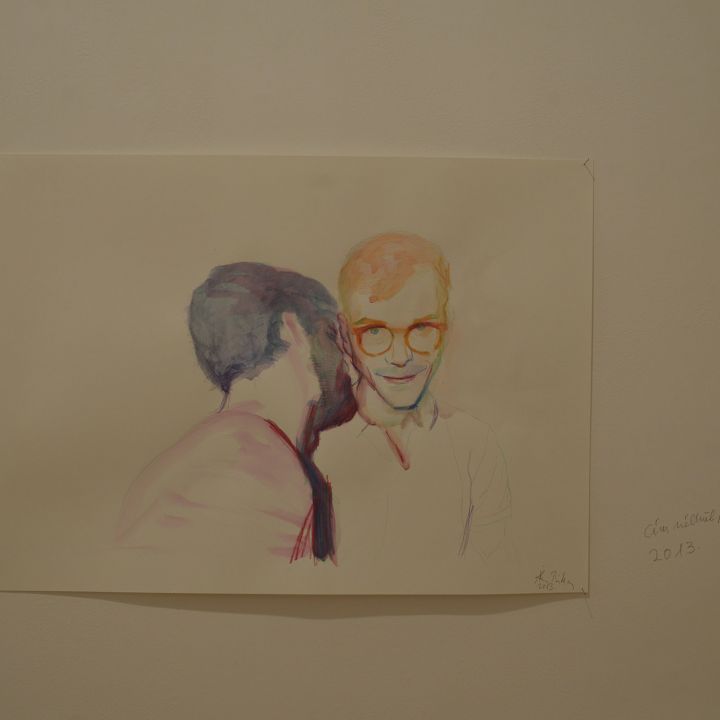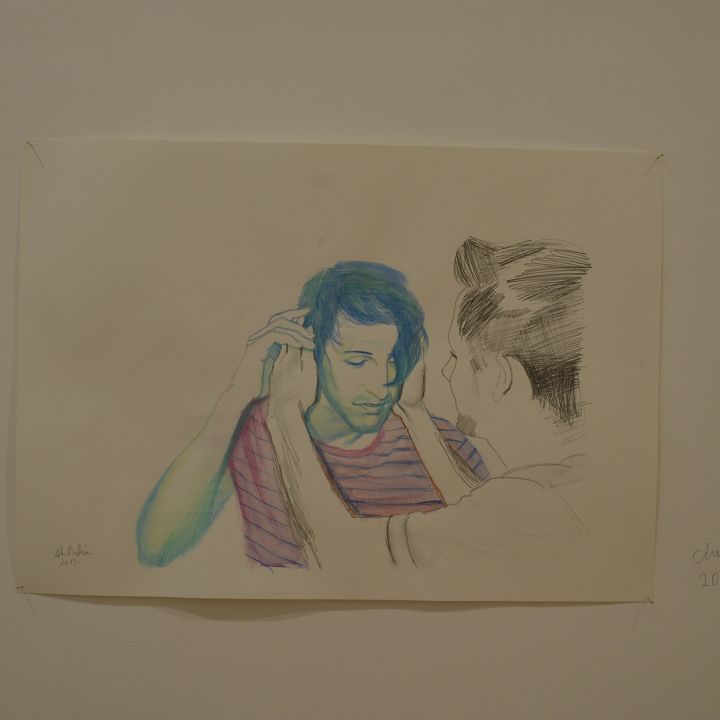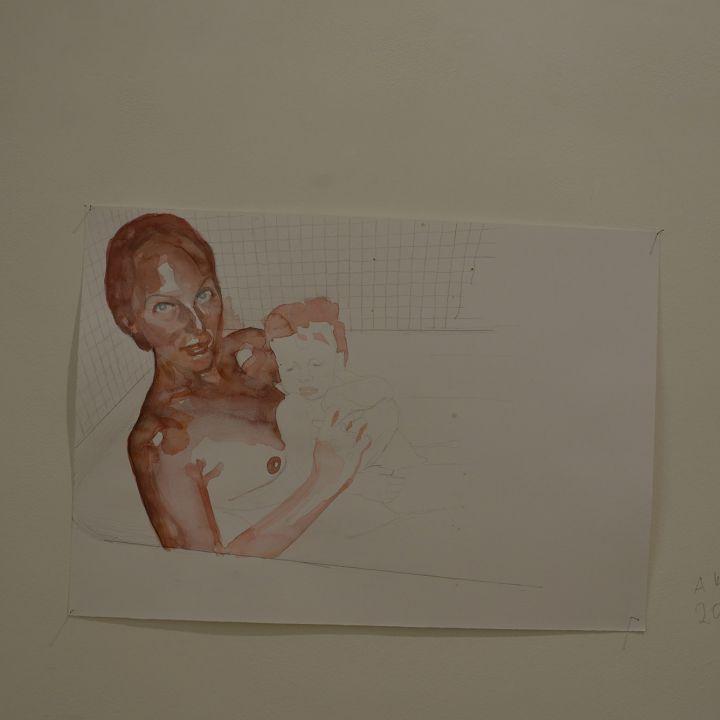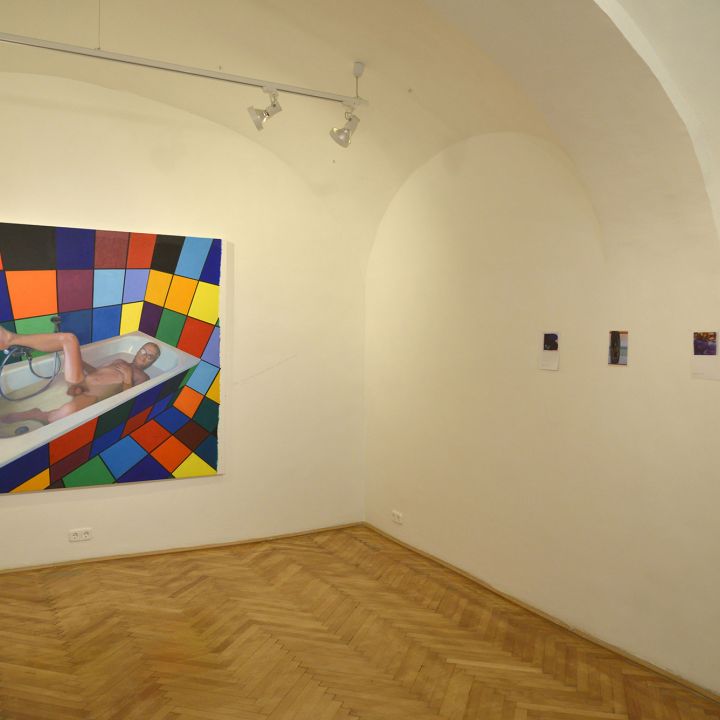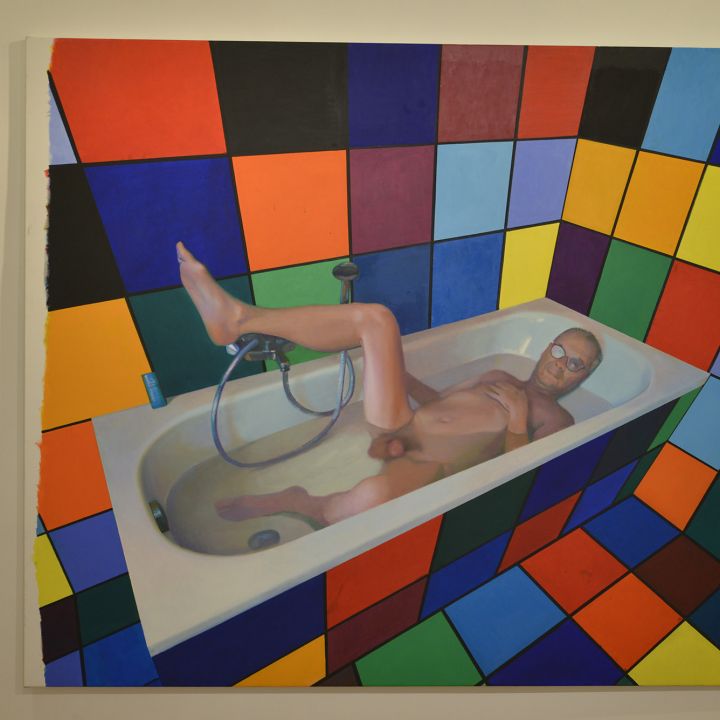„… Lancer des pierres au ciel En criant Dieu est mort…”/"...Throwing stones at the sky and shouting God is dead..."
"The exhibited works are "stretched" between two pictures: the first and the last dated picture - 42 years apart (1973 - 2015) - both titled Civic Hungary...
...The first depicts my first friend, Lóránt Méhes in a 1790s French Revolution costume with a 1968 bob and a look that is not revolutionary but controversial. The picture is "damaged", showing signs of "restoration" and has a wide empire-biedermeier frame painted on it. This work was never exhibited, it was sent to my friend Pál Koncz in Veszprém immediately after its completion and I have not seen it since, until now.
The other picture is of myself today in a bathtub of water in a brightly coloured space (bathroom?). Subtitled "The populist odalisque has all the answers" It is part of a series I started painting three years ago. The photos on which the painting is based were taken in January this year in Leipzig, when this exhibition was not yet on the agenda. So I made this painting especially for this exhibition.
The other works in the exhibition are intended to accompany and interpret these two images.
Short comment. Nowadays, "civil Hungary" has become a buzzword. But I am not aware of any debate about what it means. Perhaps nothing any more. The two pictures that form the basis of the exhibition contrast what I thought about the concept of "civil Hungary" in 1973 with what I think about it today, in 2015. It is an ideal, but one gets the feeling that civic Hungary is being realised now in much the same way as socialism was in 1973.
The quote in French is from Jacques Brel's beautiful 1964 song "A mon dernier repas"/"To my Last Meal". Heartbreaking: words of adolescent wildness and utter futility, condensed!"
Ákos Birkás
Productive Anachronism
The "Populist Constellations" of Ákos Birkás
"It is not only the textual commentary on works of art, but also the way in which they are presented that can become a determining tool of (self-)interpretation. The new associations and constellations that emerge in the course of the staging reveal hitherto unknown contexts of the oeuvre presented. The exhibition becomes a space for self-reflection, the gesture of "self-installation" unfolds the dense network of internal and external references of the oeuvre.
Ákos Birkás's latest exhibition can be seen as such a self-interpretative gesture - a peculiar inner dialogue in which the artist juxtaposes some of his new works with an early painting. The "old" and the "new" works mutually re-read each other. The disruption of the linearity of the chronological order creates a productive anachronism. The 'past' and the 'present' thus create a kind of Walter Benjaminian constellation, a 'dialectical configuration of mismatched times', by displacing and critiquing each other...
...
This exhibition confronts the two ends of the "realist" strand of Birkás' oeuvre. It juxtaposes a painting from 1973 with one from 2015. The anachronistic parallel not only highlights the inner context of the oeuvre, but also the similarities between the historical periods and social situations evoked. It is not only Birkás's 'early' and 'late' realism that becomes readable, but also the historical context in which the two paintings were created. Reflecting on the social conditions in Hungary in the 1970s and today, we are reminded of Mark Twain's famous bon mot that 'history does not repeat itself, but rhymes'. In his paintings, Birkás reveals the subtle rhymes, overlaps and latent connections between different historical contexts. In this context one may ask why the artist more than thirty years after his early realist paintings has returned to figurative painting and what the slogan "Civic Hungary", which became the title of both paintings once meant and still means today.
The starting point for the exhibition is a painting by Birkás from 1973. It has never been exhibited or published before and remains largely unknown to the public. In retrospect, looking back over a long period of time it emerges as an 'archaeological artefact' of a particular kind, but it was already essentially an archaeological artefact in its modern era. The picture is connected to an early series of wall paintings by Birkás: the details of local interiors, the frames revealing a particular taste, the kitschy, provincial motifs and wallpaper decorations indirectly described a social atmosphere, while at the same time evoking the old schema of the 'picture in the picture' and prompting questions of art theory. Both the social and the theoretical problematics were linked to the photorealist tendencies of the period, especially their sociographic-inspired Eastern European variants, but Birkas was far from a precise imitator of photographic representation from the outset. Like the other works in the series, Civic Hungary is primarily linked to the Baroque tradition of trompe l'oeil (one of the most important art historical antecedents of photorealism). This type of image, based on the deception of the eye relies on the manipulation of the gaze, a specific form of "lying", which in Hungary in the 1970s had not only a critical message of the media, but it also had an indirect political message.
Birkás ironically piles on illusory painted frames, which in their own way evoke the central motifs of the painting. Other alienating elements are the painted crack-net, so characteristic of trompe l'oeil, and the cleaned-up, broken strip of canvas, imitating the 'restoration'. The painting was still 'old' in its new age. It was the product of an oppressively conservative society which, to quote Birkas, 'poses the problem of a present locked in the patterns of the past'. The painting builds on a particular dialectic between the present made past and the present past: it distances the present and brings the past close. At the centre of the work is Birkás's contemporary and friend Lóránt Méhes (Zuzu).
The young painter embodies not only an artistic, but also a human attitude. The long hair and the contemplative gaze, despite its gentleness suggest a quiet yet resistant attitude. However, all this is relativised by the context painted by Birkás: the old costume evoking the period of the French Revolution, the pink top hat suggesting an over-refined dandyism, the painterly style reminiscent of late Rococo and Classicist art: the cloudy sky painted typical of Tiepolo, the antique barrier separating the picture from the space of the viewer, the masterfully rigid setting evoking the world of allegorical painting....
...
Birkás's latest painting, which is a kind of reflection on his 1973 composition Civic Hungary, is part of the series Populist Odalisques (Civic Hungary. The Populist Odalisque Has the Answer to Everything, 2015). The painting shows Birkás in a bathtub among brightly coloured tiles. The nude painter posing as a bathing haremmaid reveals himself in an embarrassing way, as if modelling the current position of figurative painting, which is vulnerable to both the current power and the audience. It is not without self-mockery that he calls this peculiarly contradictory artistic attitude 'populist' (to quote Ernesto Laclau)...
...
Birkás's illusory self-portrait - and his entire exhibition - appears to be both a painting and a social situation. It is a reckoning with the passage of time and the decades between the two paintings of the same title. The anachronistic juxtaposition of different layers of time and style and the sometimes anachronistic perspectives and constellations of painting today."
Dávid Fehér, art historian

